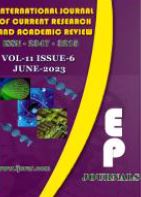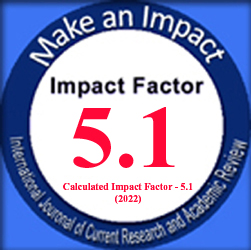Abstract Volume:11 Issue-6 Year-2023 Original Research Articles
 |
Online ISSN : 2347 - 3215 Issues : 12 per year Publisher : Excellent Publishers Email : editorijcret@gmail.com |
Vertisols are a group of heavy-textured soils which occur extensively in the tropics, subtropics and warm temperate zones and are known as Dark Clays, Black Earths, Black Cotton soils, Dark Cracking soils, Grumusols and Regurs in other classification systems. Approximately 310 million ha of these soils in Asia (mostly in India), in America (mostly in the United States of America, Venezuela, and Argentina), in Australia, and in the continent of Africa. Vertisols are often formed from weathered volcanic ash, basalt, or other fine-grained materials that contain a high proportion of clay minerals. These parent materials undergo weathering and transformation processes over time, resulting in the development of Vertisols with their characteristic high clay content. Vertisols are a unique type of soil known for their high clay content with clay particles making up a significant proportion of their composition, typically exceeding 30%, Vertisols exhibit distinct characteristics that have both advantages and challenges for agricultural practices. The shrink-swell behavior refers to the volume changes that occur in Vertisols as they undergo wetting and drying cycles. Vertisols, a type of soil characterized by their high clay content, possess a remarkable water-holding capacity. This unique characteristic makes Vertisols highly valuable for agricultural practices, particularly in areas with variable rainfall patterns. They constitute a considerable agricultural potential but adapted management like cop rotation, surface drainage, tillage fertilization early planting and cropping system are a precondition for soil management and sustained crop production.
How to cite this article:
Ewnetu Teshale. 2023. Problems Associated with Physical and Chemical Properties of Vertisols and Management Options in Agriculture - A Review.Int.J.Curr.Res.Aca.Rev. 11(6): 13-21doi: https://doi.org/10.20546/ijcrar.2023.1106.002



Quick Navigation
- Print Article
- Full Text PDF
- How to Cite this Article
- on Google
- on Google Scholor
- Citation Alert By Google Scholar
